MSA Award Winners: The Delmenico family’s feedlot success
Attention to detail like no other has awarded these Mallee cattle producers MSA’s most outstanding Victorian producer for 2021.
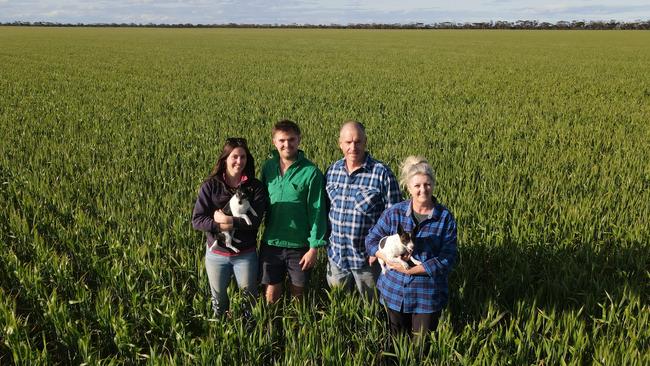
Attention to detail and a passion for improvement, far beyond where most would be satisfied, has seen Craig Delmenico and his family build their cattle backgrounding operation to new heights, just shy of 20 years since it was first introducing to their mixed farming business.
Operating across about 1200ha at Ultima, in Victoria’s Mallee, anyone would be forgiven for thinking the Delmenicos were running a dryland cropping farm.
But sectioned off in containment pens, much like a feedlot, are some of the most profitable assets of the business; the Delmenicos’ herd of backgrounding cattle.
Farm owners Craig and Isla Delmenico said their cattle operation was critical to their dryland cropping business, as a means to spread risk and diversify income.
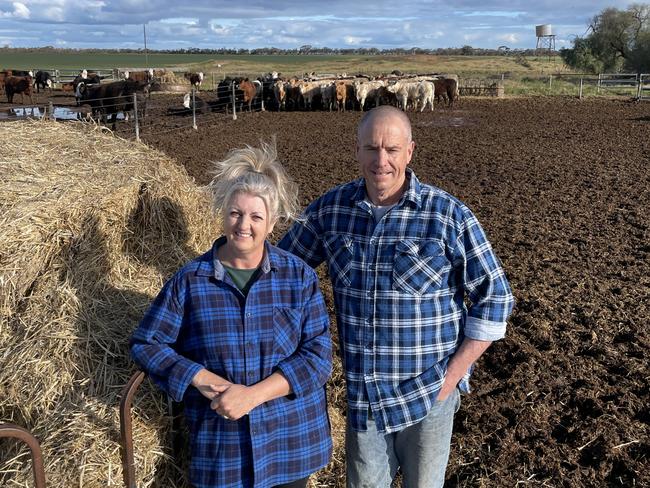
After initially diversifying following the 2002 drought, the feedlot-like containment pens were installed as a way to cut costs about 10 years ago, when the Delmenicos approached Coles to supply the supermarket directly.
And what was once a side business has grown rapidly since, culminating in the Delmenicos being recognised as most outstanding Meat Standards Australia producer in Victoria last year.
Craig and Isla manage the beef side of the operation while their son, Bo, has taken over the cropping portion of the farm.
“We have begun our succession plan with Bo coming into business with us in the last year,” Craig said.
Bo, 24, recently finished an agricultural degree at Longerenong College and was keen to be back on the family farm.
“We have another son working locally as a cabinet maker and our daughter is in local real estate,” Craig said.
While Bo marks the fifth generation of farmers in the family, their current property was bought just 20 years ago.
“We bought our first 260 hectares in 2000 then began purchasing the family farm over the following 15 years,” Craig said.
Since Bo returned to the farm, Craig said he had a lot more time to focus and build the cattle side of their business.
“We started off cropping but the cattle program expanded so well that we’re nearly 50-50 (split) now,” Craig said.
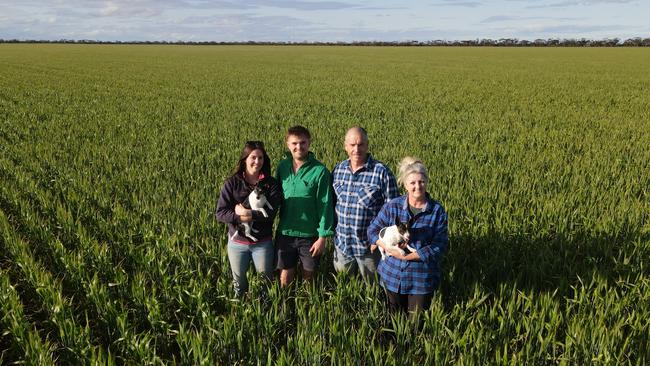
FEEDLOT ENVIRONMENT
The Delmenicos aren’t registered as a feedlot, but they fatten their cattle in a “feedlot environment”, drawing on feedlot management techniques to capitalise on productivity.
About 200 head of cattle are on the property at a time, equating to a turnover of about 500 cattle a year.
“We buy them in at around 300kg and we sell them at around 550kg for a hooked weight of 320kg,” Craig said.
“We have a window weight range that the supermarkets accept. They can’t go over 600kg so we have to know their weight gains when we draft them up to be trucked.
After many years, Craig has his calculations down to a fine art.
“We have a weight gain of 1.7kg per day on average and a yield assessment of 57 per cent, so we know at the abattoir they’ll average 320kg.”
Craig and Isla buy about 500 British bred cattle each year, sourcing British bred weaner steers between 250kg and 300kg to grow out to about 550kg.
The steers are managed in small mobs of 25-27, which equates to one truckload that Craig personally freights to Melbourne.
When sourcing cattle to put on feed, Craig looks for well-bred animals with a quiet temperament, which he typically buys from Mt Gambier with the help of an agent and through AuctionsPlus.
“We like to have relaxed cattle – it’s all about stress management in the herd,” he said.
“We don’t have any particular bloodlines or breeds that we use in general but we try to buy lines of cattle of 10 or 20 from one property and we look for larger framed cattle so they grow out well.”
STRESS-FREE PRODUCTIVITY
While complex and finicky in its execution, Craig has a relatively simple philosophy for maximising carcass quality in his end product; low-stress cattle produce better quality meat.
Craig’s key indicator of stress is the pH levels that come back in reports from their kill cattle, with a goal of 5.5 and under in their meat.
“My view is low pH means low stress; low stress means more weight gain and better-quality meat,” Craig said.
“A lot of small changes make a big difference.
“To get the pH level down in your cattle it’s all about your handling of them so they’re stress free.”
From the moment the cattle arrive on their property to the time they are delivered to Melbourne, every aspect of the cattle’s management is designed to minimise stress.
“We study the way they come into the pens through the drafting race and which cattle stick together, we try to avoid separating the ‘mates’ as much as possible,” Craig said.
The cattle are touched as little as possible and familiar routines are adhered to.
“They go into a pen to settle down where they’re just fed hay. Then after about a week they get weighed, needled and backlined and go out to another pen until they are at the right weight to be drafted into truckload lots,” Craig said.
“The feed is available to them at all times and they just help themselves.”
The grain is dispensed via lip feeders stationed in each pen that hold about four tonnes of grain, and they are filled with a chaser bin, which the cattle help themselves to.
Cattle are fed a rain ration of barley, lupins, a mineral additive and a buffer for acidosis, as well as barley hay and straw, which is grown on farm.
“When we fill the feeders we try to use the same vehicles and the same people,” Craig said.
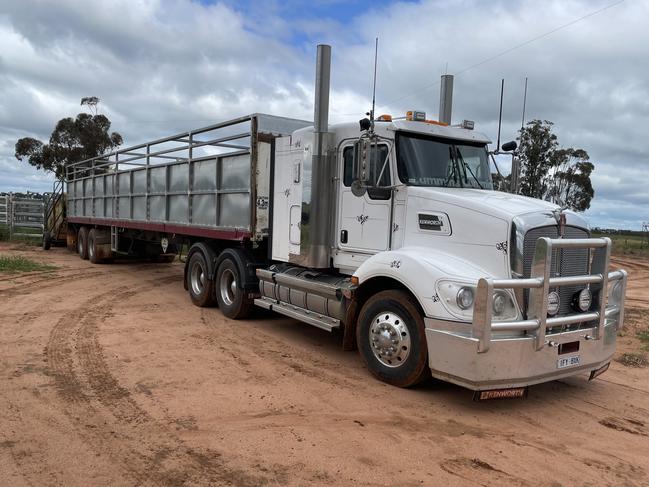
Craig said their strict system has been a process of finetuning a lot of little things.
“Even transporting, I’ve worked out that if I load them up and take them straight down they don’t get as stressed,” he said. “Whereas I used to load them into the truck then come home, have a coffee and a shower then drive to Melbourne and stop halfway. But every time the truck stops they want to get off and they get stressed.
“I don’t use an exhaust brake on my truck so there’s no real loud noises. Even just doing something simple like that dropped the average pH levels in a load of cattle by 0.5 per cent.”
Craig wants to continue to improve his system through his focus on animal behaviour.
“I want to set cameras up in the truck to study the behaviour of cattle in transport and see if I can work out any other ways of keeping them calm.”
MSA RECOGNITION
Craig’s attention to detail, and strict culling criteria, saw their cattle maintain 100 per cent MSA compliance for six years.
“If we don’t think one is good enough we’ll pull it out and send it to the local saleyards. Everything that goes to Melbourne is MSA quality in our eyes,” he said.
“Only a few months ago one slipped through the system and didn’t make the grade, which was disappointing to break our run.”
From 2019 to 2021, the Delmenicos averaged an MSA Index of 64.17, which won them the 2021 MSA Excellence in Eating Quality awards for most outstanding MSA producer in Victoria.
Craig was first introduced to the MSA program eight years ago through their Coles buyer.
“When I logged in and looked up my cattle I was just so intrigued,” Craig said.
“I saw I was getting noncompliance cattle that weren’t making the MSA grade, so then we started to make changes to improve our index score and make sure every cattle meets those specifications.
“Now we are constantly working on improving our MSA index score.”
CROPS IN THE MIX
On the cropping side of things, Bo has quickly familiarised himself with the business and he plans to grow it in coming years, both productively and sustainably with a fresh approach to regenerative agriculture.
Bo plants wheat and barley but this year has also put in some canola for the first time. They also grow lentils and vetch.
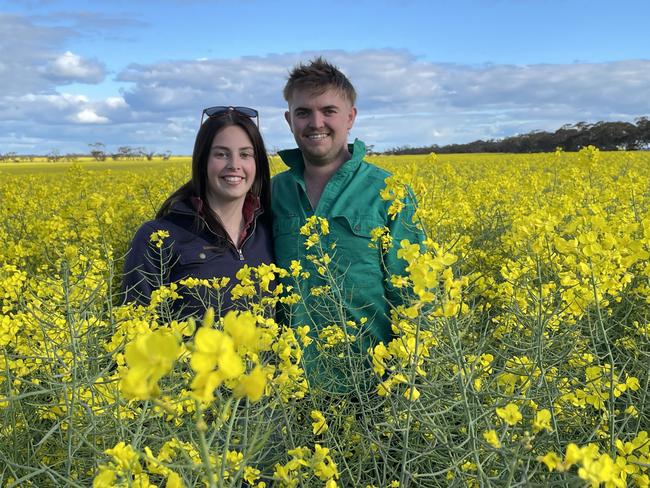
“The canola has done really well for us this year, which is promising and we’re looking like continuing with the canola in our rotation,” he said.
The cropping paddocks range in size, with the largest a 364ha block, and are all within 10km of the house.
“The (lentils) have definitely helped in years like this, with the inflation of all the costs of inputs particularly with the fertiliser,” Bo said.
“In the past, growing legumes wasn’t as profitable but now we can be profitable with the lentils and still have a good rotation system, which deposits nitrogen back into the soil.”
Bo said biodiversity in the soil is one thing he really wants to improve on the farm.
“I’ve been doing a lot of research on regenerative agriculture and how to build not only nitrogen stores, but soil biological diversity,” he said.
Recently, Bo has been experimenting with a cover crop with 10 or more species of plants to trial the benefits to the soil.
While the average annual rainfall of the area was meant to be 300mm, mainly falling in winter, Craig said is had been a long time since they had seen that much.
Having received 271mm so far this year, Craig is very happy with their season.
“It’s very good – last year we only had 136mm,” he said.
Craig said high beef and grain prices had a big impact on their margins and meant they were operating with higher risk.
The cattle side of the operation was more profitable and growing every year Craig said, as they incurred “less expenses with less risk”.
The farms’ biggest costs include their cattle purchases, chemical, fertiliser, fuel, followed by repairs and maintenance.




